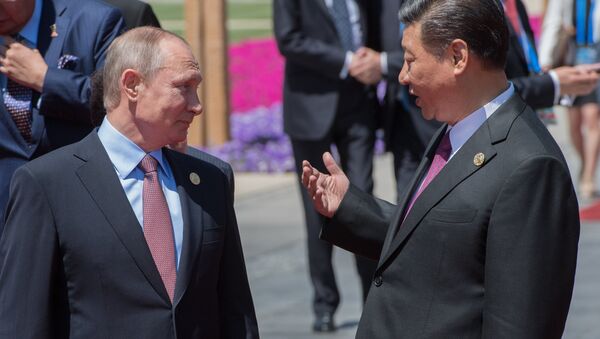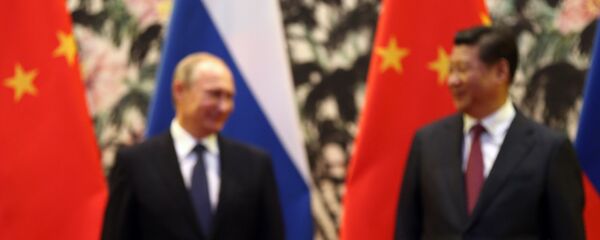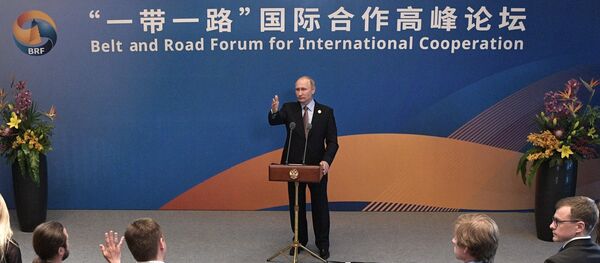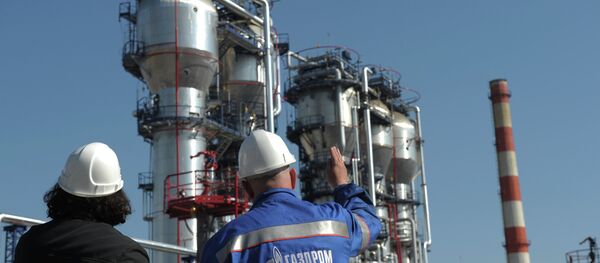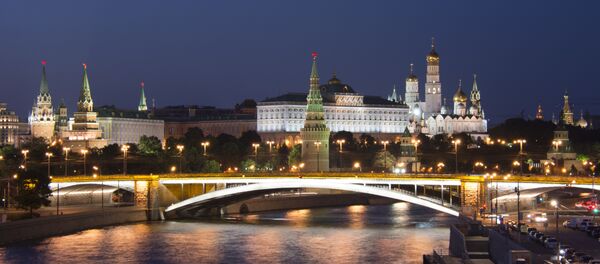MOSCOW (Sputnik), Tommy Yang — Russia and China’s strategic alliance in international affairs may not be enough to help them resolve challenges in their bilateral economic cooperation, such as the implementation of the Power of Siberia gas pipeline project and lack of balance in bilateral trade, analysts told Sputnik commenting on the visit of Chinese Foreign Minister Wang Yi to Russia that kicked off on Thursday.
Little Leverage for Russia
The latest development on this matter came when Alexey Miller, Chairman of the Gazprom Management Committee, traveled to Beijing with Russian President Vladimir Putin, who visited China to attend the Belt and Road Forum for International Cooperation last week.
The Power of Siberia gas pipeline, projected to supply 38 billion cubic meters of Russian gas annually to China, is endorsed by Russian and Chinese leaders. Both Putin and Chinese President Xi Jinping were present at the contract signing ceremony of the project in May 2014, at the end of Putin’s two-day official visit to China.
However, economic partnerships, championed by both countries’ leaders, face many challenges when it comes to creating a detailed plan of execution. For example, after reaching a tentative agreement on the Power of Siberia-2 project, the western route of gas supply from Russia to China, in May 2015, Gazprom chairman Miller traveled to Beijing in June of the following year. This trip came at the same time as Putin was visiting China to discuss further details of the western route. However, no plan for the western route was subsequently released by Gazprom.
Analysts have suggested that the pricing for gas supply to China may pose a challenge for the Russian side because of sluggish global market conditions.
"I’m not quite sure what leverage Russia has to get China to agree to higher prices," said Pierre Noel, a senior fellow for Economic and Energy Security at the International Institute for Strategic Studies in London, UK.
Noel noted that the contract on the implementation of the expensive Power of Siberia project was signed in 2014, when global crude oil prices were at around $100 per barrel levels. But, soon afterwards, oil prices fell sharply to a record low of around $30 per barrel in early 2016. The current global oil prices are hovering at around $50 per barrel.
But growth in China’s natural gas import came mostly from imports of liquefied natural gas (LNG), as prices for LNG delivery to Asia remained at low levels of $5.8 per million British thermal units (mmBtu). China’s LNG imports grew by 33 percent to 26.06 million metric ton in 2016.
Russia also faces stiffer competition from other natural gas exporters. China and the US reached a deal in early May that allows US companies to sell LNG to China.
"China has quite a few options now. I see no reason for China to offer Russia anything more generous than current market prices," Noel said.
Commenting on the progress of the Power of Siberia gas pipeline project at a press conference in Beijing, Putin said that Russia and China no longer have disputes over prices, and that almost everything regarding the matter has been decided.
Gazprom said the contract signed with CNPC in May 2014 contains major provisions such as the price formula linked to oil prices and the "take-or-pay" clause. Under a "take-or-pay" contract, the buyer either takes the products from the supplier or pays the supplier a penalty for the products it does not take.
Key to Trade Balance With China
Official figures from Chinese customs showed that, from January to April of this year, bilateral trade between Russia and China grew 26.2 percent, from the same period of the previous year, to $24.7 billion. Russian exports to China jumped 30.1 percent to $13.1 billion, while Chinese exports to Russia rose 22 percent to $11.7 billion.
But Russian exports to China relied heavily on raw materials such as fossil fuel and timber. In the first four months of this year, over 75.6 percent of Russian exports to China were fossil fuel and timber, which stood at $8.5 billion and $1.4 billion, respectively, Chinese customs data showed.
Russia posted a trade surplus of $1.44 billion with China in 2011. But after crude oil exports to China boosted Russian exports to new heights, Chinese exports to Russia also expanded quickly to a peak of $53.7 billion in 2014. About 48 percent of Chinese exports to Russia in that year were electronics and textile products. In spite of exporting $41.6 billion of products to China in 2014, Russia still posted a trade deficit of $12.1 billion against China.
Russian exports to China dropped about 20 percent in 2015 to $33.3 billion, after global oil prices crashed from around $100 per barrel in 2014 to about $50 per barrel in 2015. Once the Power of Siberia gas pipeline is completed, its 38 billion cubic meters of annual delivery capacity could provide an additional boost of $6.5 billion to Russian exports to China, based on the average delivery price of $170 per thousand cubic meters of Russian natural gas to Europe in 2016.
"It will definitely boost Russia’s export numbers. What’s more important is that it can help Russia diversify its gas exports," Vasily Kashin, a China expert at the Institute of Far Eastern Studies in Moscow, said.
The Power of Siberia’s annual delivery capacity of 38 billion cubic meters of gas could meet 18.5 percent of China’s natural gas demand in 2016. A recent research report from CNPC expects China’s gas consumption to boom to 510 billion cubic meters in 2030 and 710 billion cubic meters in 2050.
But Kashin suggested that, in order to improve Russia’s export structure with China, Moscow should focus on getting Beijing to open its market of agricultural products to Russian companies.
"China is very protectionist when it comes to agricultural products. There’re huge technical requirements before Russian meat, dairy and poultry products can enter the Chinese market," he said.
Kashin believes positive political dynamic between Russia and China may be able to help clear some of the hurdles.
